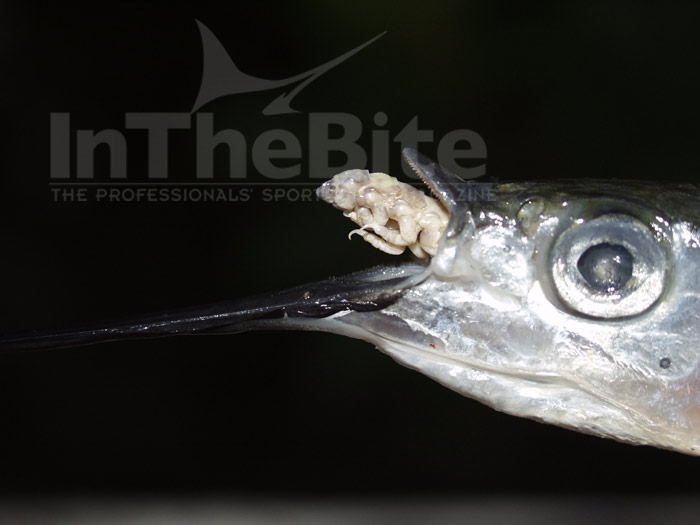
Hey! What is that thing? Did the ballyhoo choke on its last dinner? Or is it a mini sea monster? Anyone experienced in dealing with ballyhoo that come from the Gulf and Atlantic waters off of south Florida has seen them: the creepy whitish creatures inside the ballyhoo mouth. Unfortunately for the ballyhoo, they are not its last dinner, but parasites whose life cycle sounds more like science fiction than science. Specifically, they are the isopod called Glossobius hemiramphi. Isopods are crustaceans, like shrimp and crabs, but are more closely related to insects that hide under leaves and wood. There are over 10,000 species of isopods in the world, found in almost all environments. This large number of species makes them the most abundant crustaceans on earth. Only a few species out of the 10,000 are parasitic. Parasitic isopods are host-specific; that is, they seek out only certain species in which to pass their lives. Once attached to the host, they survive by sucking bodily fluids and blood from their host. G. hemiramphi is so specialized that it only lives in two places: the gills and mouth of the ballyhoo. This is no ordinary bloodsucker. Indeed, they are natural transsexuals. Here is how it happens: The free-swimming larvae, also known as a manca are released from their mother. They immediately begin looking for new host ballyhoo. Upon finding a suitable host (and home), they attach to the gills and begin life as functional male isopods. After further development, they move to the tongue and transform into pregnant females, releasing their babies and restarting the process. This sex change can even reverse when the parasites detect the presence of a new male isopod in the gills. Fortunately for the ballyhoo and fishermen, these parasites do not seem to affect the growth of the ballyhoo. Smaller ballyhoo are more likely to be infected, and studies have shown relatively high average infestation rates of 10% of the entire population. Infestations are highest in the summer months. So the next time you pull one of these creatures out of the bait mouth to frighten an unwitting charter, you can also impress them with your knowledge of the intimate and interesting life of this tiny ballyhoo bug!














